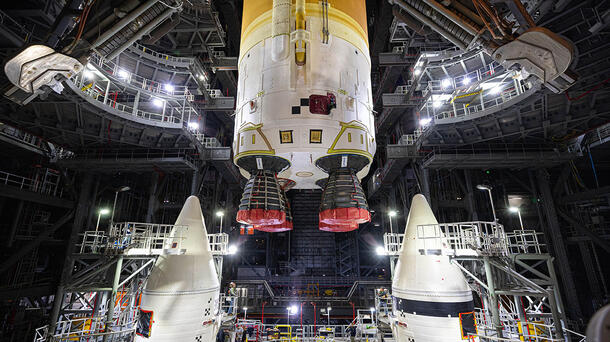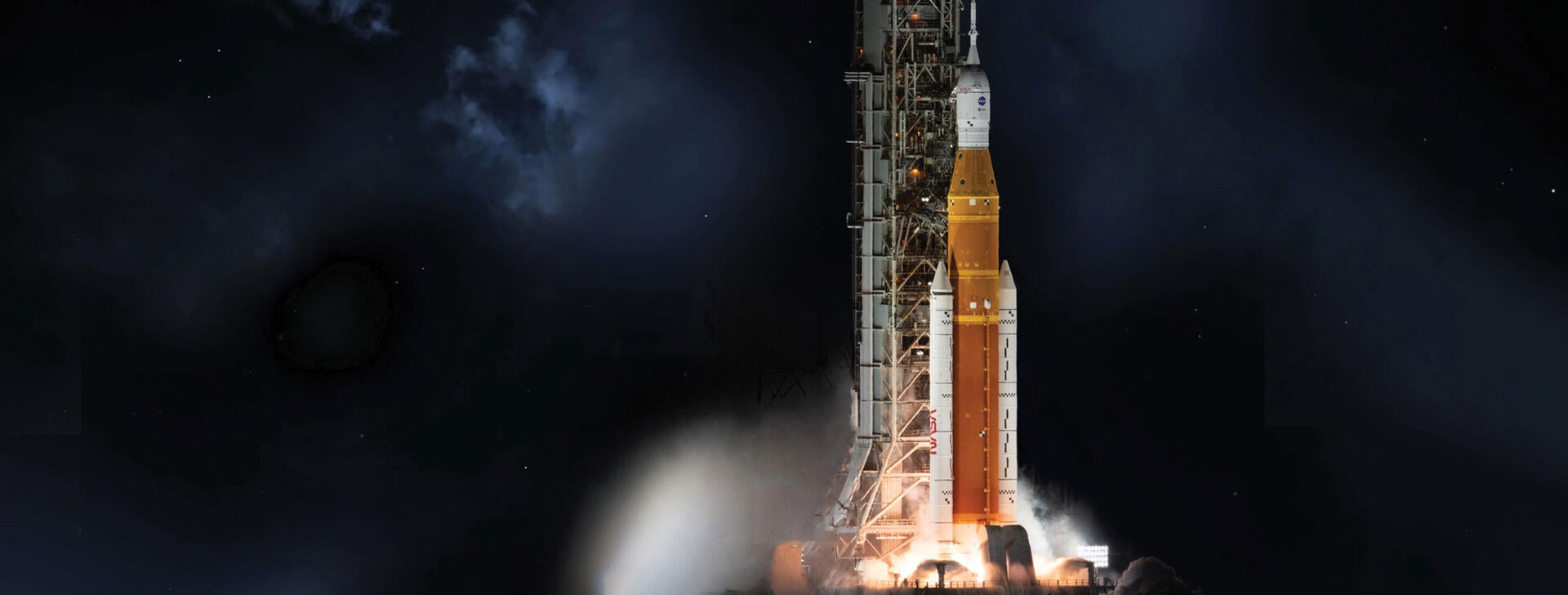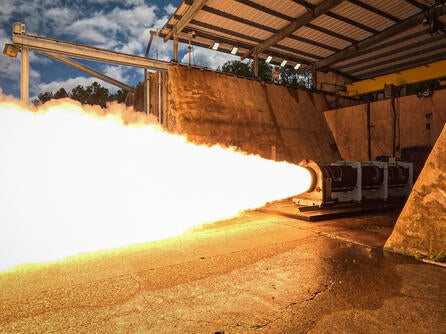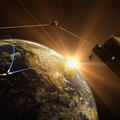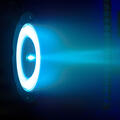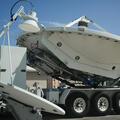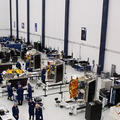NASA’s Artemis II mission is one step closer to reality with NASA and industry teams at Kennedy Space Center successfully completing RS-25 engine checkout tests as part of the Space Launch System (SLS) Program Specific Engineering Test (PSET) series. Conducted inside Kennedy’s Vehicle Assembly Building, the PSET effort includes integrated system testing of the SLS core stage, RS-25 core stage engines and solid rocket boosters.
This critical milestone features a full virtual hot fire simulation of the L3Harris RS-25 engines. Engineers performed check-outs to ensure seamless communication between the four RS-25 engine controllers and the vehicle. They also confirmed that the engines could gimbal just as they would during an actual flight.
RS-25 field engineer and self-described rocket engine listener, Bill Muddle, is at Kennedy Space Center in Florida to ensure the engines remain healthy and ready to perform as expected.
“Every day I come to work knowing that the RS-25 field engineering team has to take care of these engines, because we know we have humans riding in Orion on top of this vehicle and these engines have to perform flawlessly. The lives of our astronauts are in the RS-25 team’s hands for the eight and a half minutes those engines are firing during launch,” said Muddle. “Our team is doing everything it can to care for and maintain the engines to ensure a successful launch.”
Artemis II is set to be the first crewed mission in NASA's Artemis program, marking the first time a crew has ventured around the moon in more than 50 years. Over the course of approximately 10 days, the mission will carry four astronauts aboard the Orion spacecraft around the moon: Commander Reid Wiseman, Pilot Victor Glover, Mission Specialist Christina Koch, and Mission Specialist Jeremy Hansen.
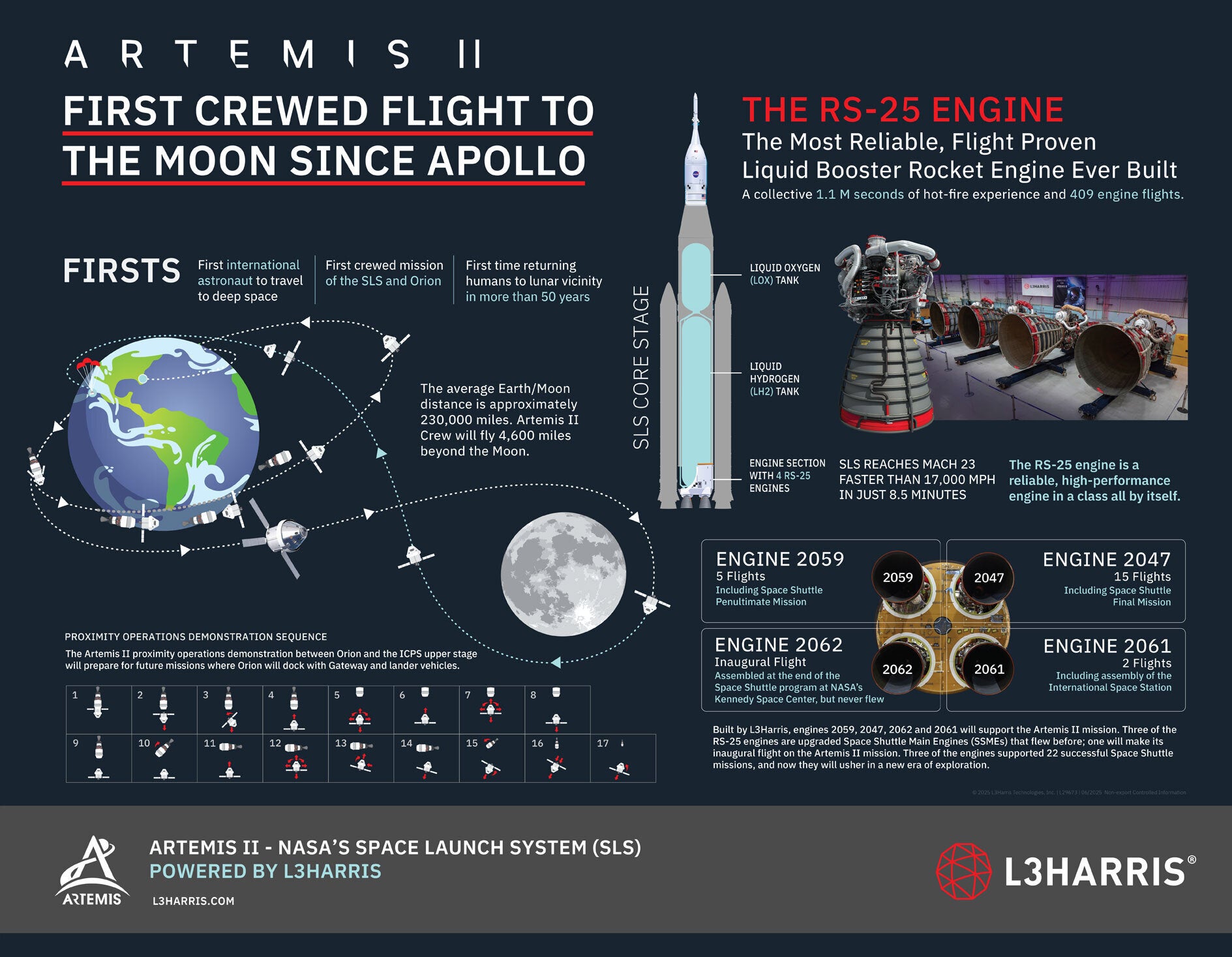
Four RS-25 engines—2047, 2059, 2061, and 2062—will power the SLS rocket and the crew during their mission. Engine 2047 flew on STS-135, the final shuttle mission; while engine 2059 flew on STS-134, the program’s penultimate flight; and engine 2061 supported assembly of the International Space Station. Between them, they flew 22 space shuttle missions. Engine 2062 will be making its inaugural flight.
“I learned during the Space Shuttle program to listen to the engines,” added Muddle. “The engines talk to you, and you have to listen and understand what they are telling you to ensure they operate properly. They will tell you if they are in ill health and need to be tweaked or if a component is having an issue and needs to be replaced. Based on the PSET tests, the engines all indicated they were healthy and ready for the pad.”
PSET testing marks the second major milestone for the integrated vehicle testing, which helps verify the functionality and interoperability of interfaces across different elements and systems. During the PSET, electrical checkouts on the engine sensors, ignitors, and controllers were conducted, as well as pneumatic and hydraulic testing.
“We’re verifying the vehicle meets the requirements and is ready to go to the pad,” continued Muddle. “Since the engines performed right down the line as we expected, I have full confidence they are ready for the next big step, which is to roll to the pad and get ready to send our astronauts back to the moon.”
Before rolling out to the pad at Launch Complex 39B at NASA’s Kennedy Space Center, the Orion spacecraft will be added to the rocket stack to complete assembly, which is currently scheduled for late this year. The Orion stacking will be followed by integrated vehicle testing of Orion and the Interim Cryogenic Propulsion Stage (ICPS) upper stage. NASA is targeting the launch of the Artemis II mission for no later than April 2026.
